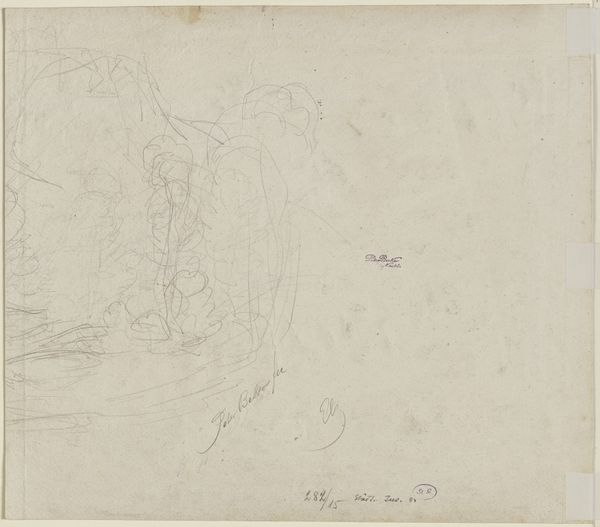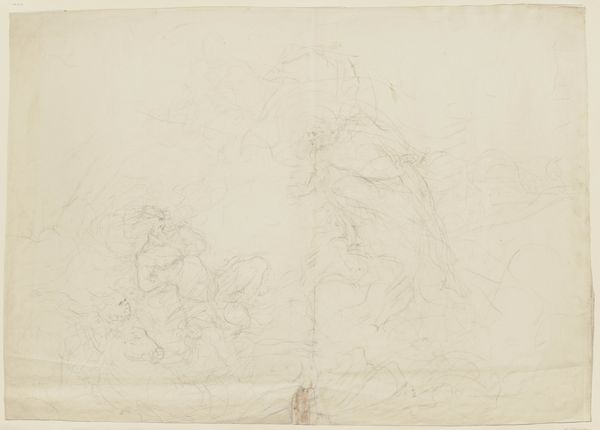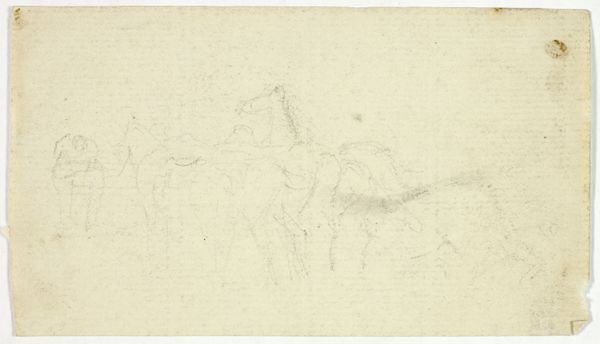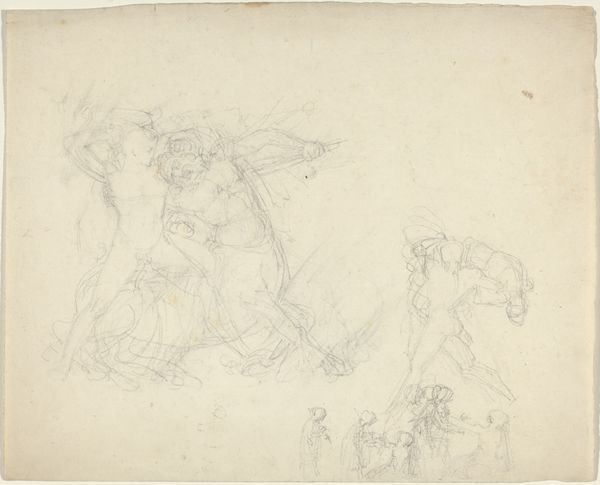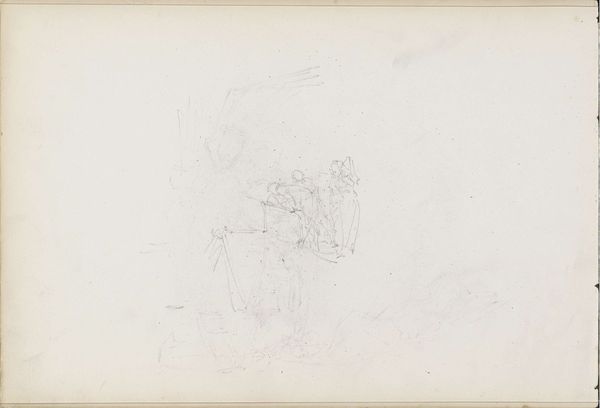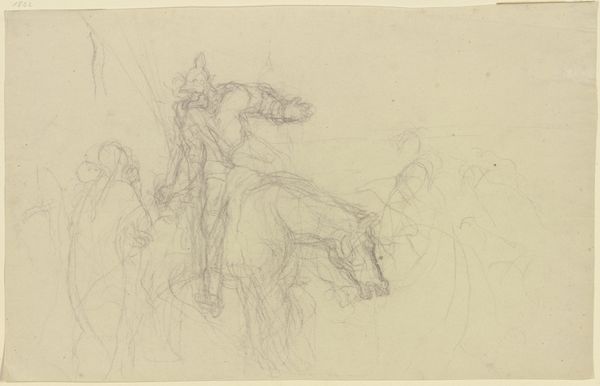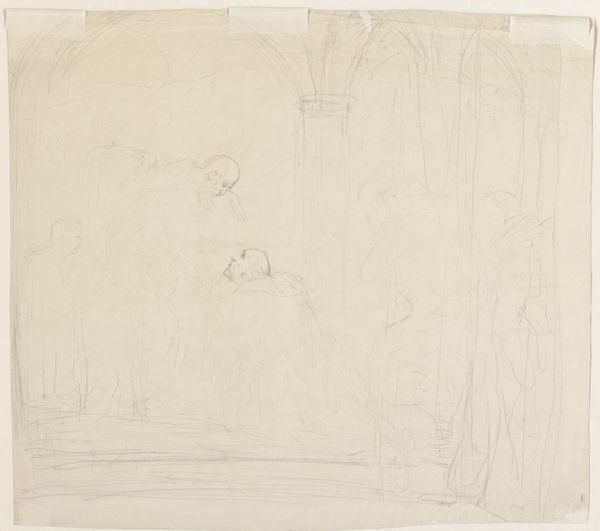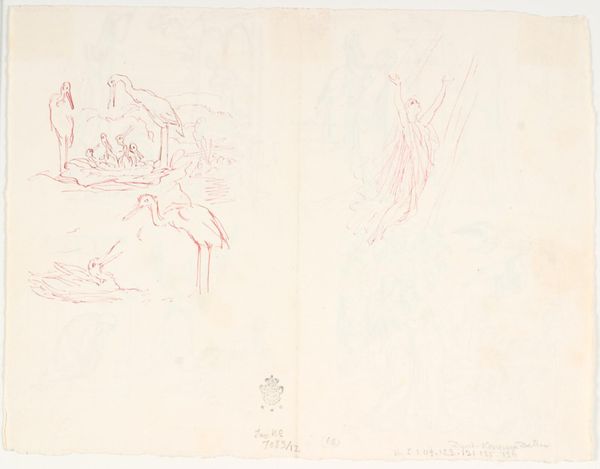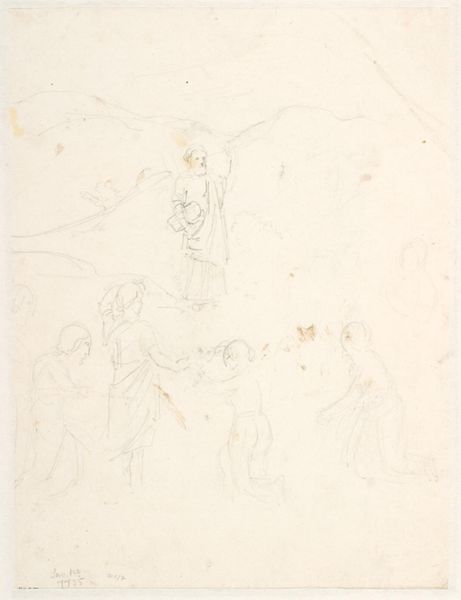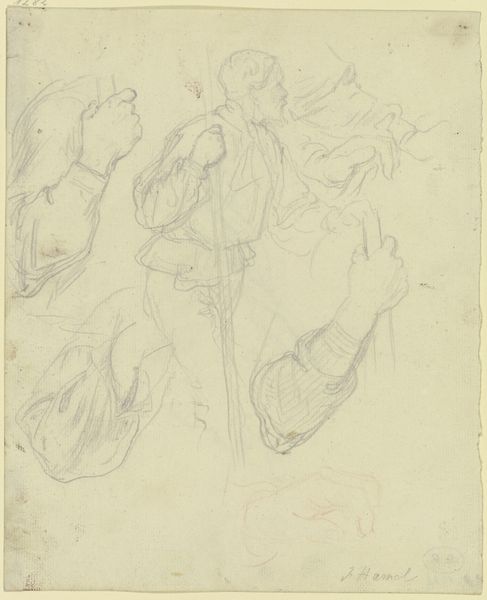
Hamlet mit dem Totenschädel des Hofnarren Yorick sowie weitere figürliche Szenen
0:00
0:00
drawing, pencil
#
drawing
#
narrative-art
#
figuration
#
pencil
#
history-painting
#
academic-art
Copyright: Public Domain
Curator: Here we have a drawing entitled "Hamlet mit dem Totenschädel des Hofnarren Yorick sowie weitere figürliche Szenen," which roughly translates to "Hamlet with the Skull of the Court Jester Yorick and Other Figurative Scenes." The artist is Victor Müller, and the piece resides here at the Städel Museum. Editor: My first impression is one of lightness and ephemerality. The faint pencil lines almost float on the page, creating a dreamlike, somewhat haunting tableau. Curator: Absolutely. The scene, depicting Hamlet contemplating Yorick's skull, is rife with symbolism about mortality, loss, and the ephemeral nature of existence. Note how Hamlet is central in his dramatic presentation with other human forms and outlines swirling in proximity. Yorick’s skull, in this context, becomes a potent reminder of the great leveler, death, rendering earthly achievements insignificant. Editor: I'm drawn to the process here, though. The very visible sketch lines give us a peek behind the curtain of art making, the material foundation, in essence, before layers are built on top. It's academic art, so clearly the planning here with layers of outlines upon outlines speak to that convention. You can see him figuring it out in front of our eyes. What’s fascinating is that we are left with process itself and the artist’s intentional decision not to build upon that foundation of raw thought and raw marks, but instead deliver to us his raw working foundation for consideration. Curator: That’s an astute observation. And perhaps that very immediacy reinforces the themes within Shakespeare's text. Hamlet’s contemplation of mortality is very present to us through this visible process. And how the lightness lends itself to its emotional significance, the ephemeral is at once about death but also the passing thoughts themselves as it considers the meaning and act of thinking, doing, and making decisions within our own lives. Editor: It does challenge us to think about what constitutes a "finished" work, doesn’t it? Was this always intended as a preliminary study, or is there a deliberate statement here about the value of the creative process itself, foregrounding labor in visual culture. Curator: It provides much to consider regarding the dialogue between artist and material and artist and subject. Victor Müller successfully invites us into this reflective moment, bridging literature and art in a meaningful way. Editor: A skeletal pencil-drawn bridge perhaps, reflecting upon layers, labor, process and completion... A fascinating work indeed, particularly in this suspended state.
Comments
No comments
Be the first to comment and join the conversation on the ultimate creative platform.

